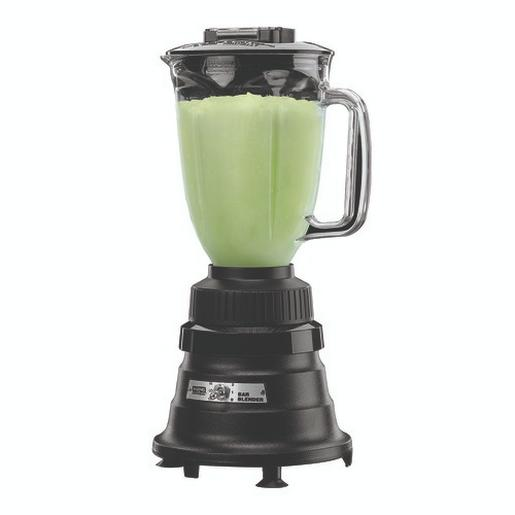Your Guide to Countertop Blenders and Handheld Blenders
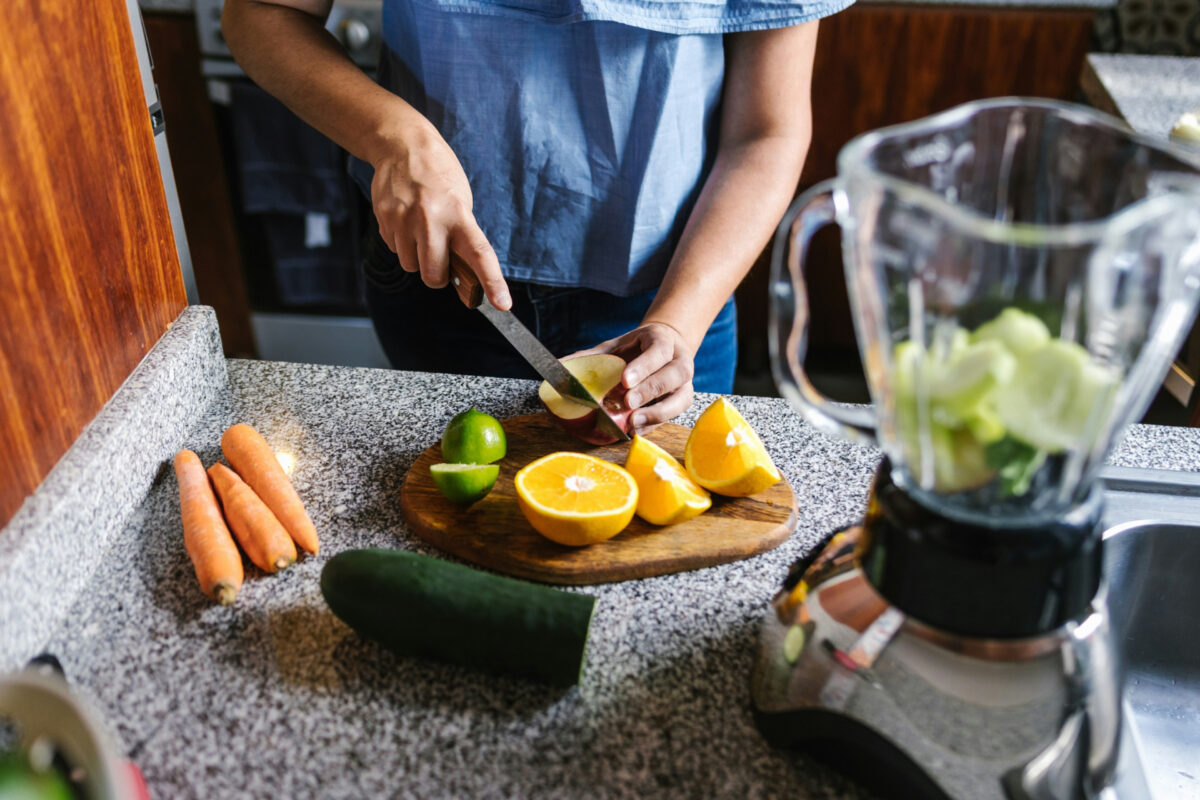
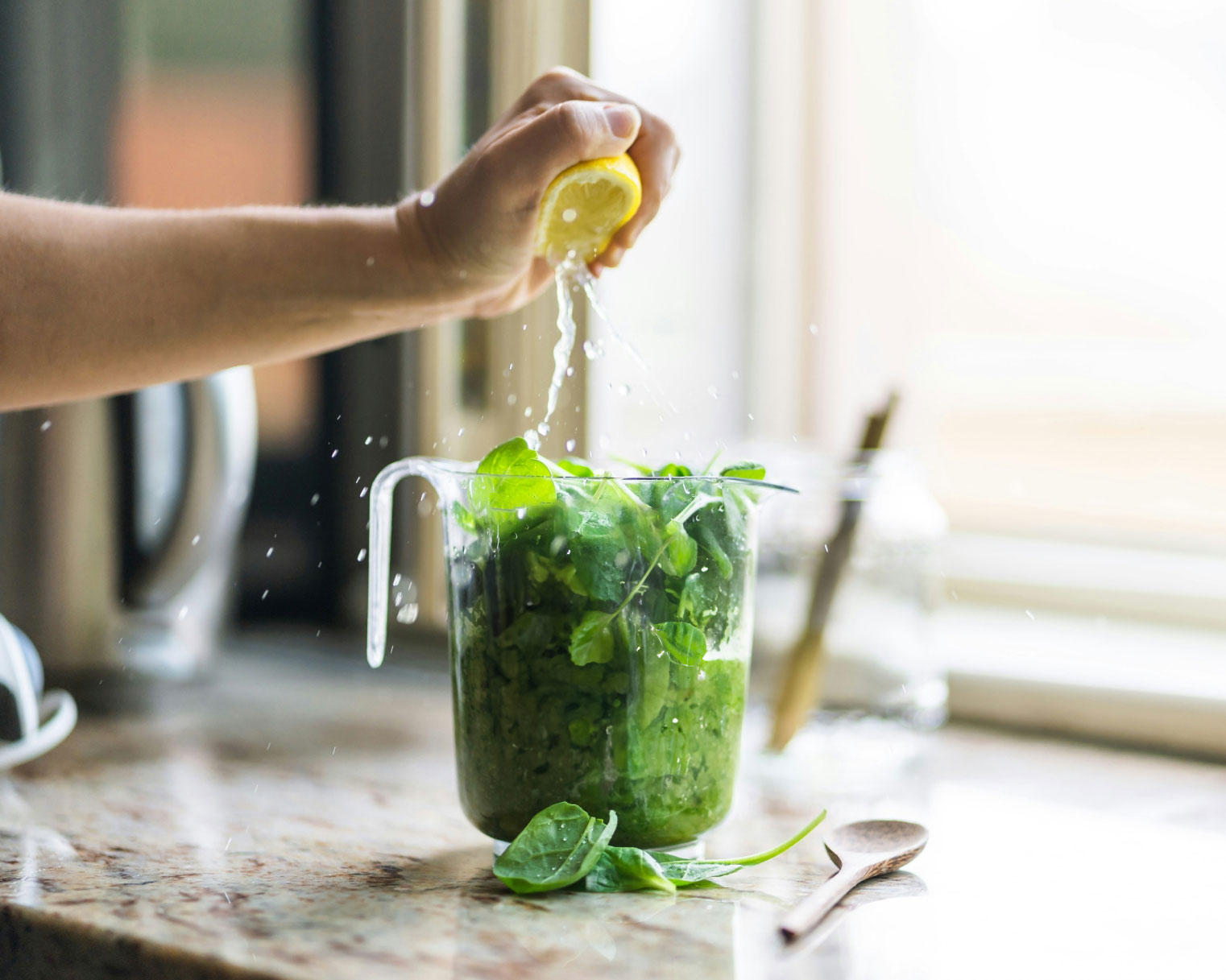
Whether you’re starting a single-serve smoothie shack or churning out 50-gallon batches of gazpacho, you’ll need to know your blenders. In this guide, we’ll focus on everything you need to know, push aside the white noise of marketing language and endless spec-talk, and get you ready to count tickets for all those new margarita orders by the time of your next shift.
Read more about each blender type:
View available blenders:
A Quick Comparison
First off, let’s establish the two worlds of commercial blending—Countertop Blenders and Handheld Blenders.
Countertop Food and Drink Blenders
Countertop Blenders are the most popular here and can be divided into two groups: Food Blenders and Drink Blenders. Food Blenders will tackle any task in the kitchen, but they may be overkill in a bar setting. Drink Blenders can’t blend food—don’t even try it.
| 🥬 Food Blenders | 🍹Drink Blenders |
|---|---|
| Chop, Grind, Blend, Purée, and Emulsify | Blend Iced Drinks to Various Textures |
| Can Blend Hot or Cold Food | Can Operate on Timers |
| Tackle Any Job in the Kitchen | Don’t Like Food (Seriously) |
Handheld Blenders
Handheld Blenders—or Immersion Blenders—are a different species entirely. If your blending needs are too wild and free to be confined by a countertop pitcher, feel free to skip ahead to read more about handheld blenders.
| ✅ Handheld Blenders Do… | 🚫 Handheld Blenders Do Not… |
|---|---|
| Blend in Any Container | Blend Ice |
| Handle Supersized Batches | Fine-Tune Texture |
| Emulsify Fresh Foods and Liquids | Have Programming Ability |

Countertop Food and Drink Blenders
There are three main areas to consider before choosing your food or drink blender:
Ready? Let’s get blending.
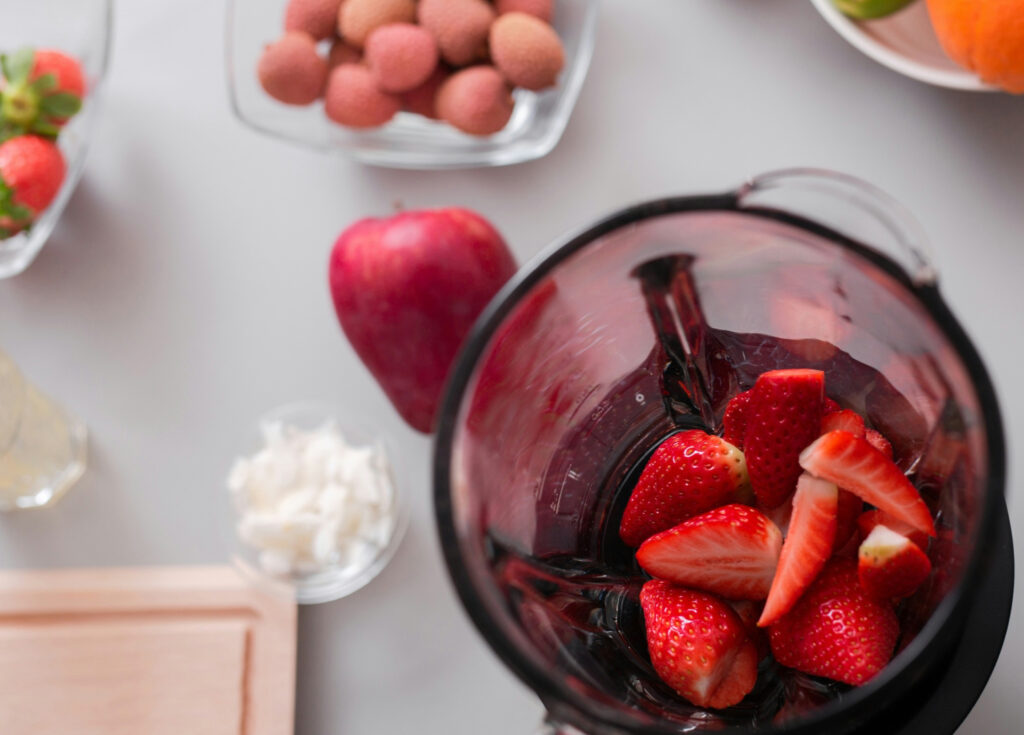
Controls
Like most machines you’ll find in your kitchen these days—both the one at home and the one at work—blenders seem to have endless combinations of digital and analog elements. Despite all the differences in bells and whistles across makes and models, the big question to ask yourself here is this: During service, how much do I want to focus on my blender?
Your answer here will guide you to one of three available options:
1
Programmable/Digital
(Low-Focus)
A programmable blender is a must in a high-traffic, multi-server bar setting. While the initial setup here will be greater, the ability for your servers to click a button and churn out consistent drinks is indispensable to a busy service. These units are inevitably the most expensive of the batch, but you’ll make your money back in ticket times.
2
Toggle and Paddle
(Medium-Focus)
A toggle or paddle switch on a blender is like flipping a light switch—just remember to pop it off before leaving the room. These units are for those that need simplicity above all else and have a good internal clock for remembering how long your blender’s been blending. Just choose between On or Off, Hi or Low, and you’re good to go.
3
Speed Dial
(High-Focus)
Would you rather drive yourself than take the passenger seat? If so, you’re probably the type speed dial blenders were made for. These units are the most hands-on of the lot, but for an attentive chef, that’s a good thing. Combining simplicity with control, a central speed dial lets you drive your blender as easy as hitting a gas pedal—turn it up to blend faster, turn it down to nudge your product past the finish line.
Containers
Material
Once upon a time, there was a big difference between blender container types. It was a question that kept chefs up at night, forcing them to choose between a rock and a hard place: do I want a durable container, or do I want to see what I’m blending?
Today, thanks to space-age technology, many chefs can have their drink and blend it too—Polycarbonate and Copolyester containers marry the durability of Metal containers to the visibility of Glass containers. But, like a game of rock-paper-scissors, each still has its place on the scene, each excelling at different applications depending on your operation.
Here’s what you need to know about The Big 4 in blender container materials:
1
Metal
Best for back-of-house hot food blending, front-of-house coffee blending, and any service really embracing the industrial look of industrial blenders. If your blended concoction might leave a stain or goes through major temperature swings, you’ll need the durability and cleanability of stainless steel.
2
Glass
Best for showing off your blends in a lower traffic, front-of-house setting. Trying to tantalize a customer? You can’t look more professional than blending your hot food or cold drinks in glass—just don’t expect the durability or the higher volume of the other materials.
3
Polycarbonate
Best for lining up drinks in a high-traffic bar. Get a couple smoothie blenders and showcase all the colorful drinks you make. Most of these are stackable, so you can store them a lot easier than metal or glass containers, and many are built to better funnel liquid toward the blade, which is great for large batches.
4
Copolyester
Best for the health-conscious smoothie maker. Copolyester is great for all the same reasons as polycarbonate, but it’s BPA-free. While plastics can stain and scuff, their affordability and interchangeability keeps them the most popular option for blender containers.
Size
Now that you’ve picked your material, let’s choose a size. As a rule, you’ll want to use the smallest possible container while not overworking your staff or your machines.
So, how many orders do you need to fill in each batch?
- Single-Serve: Get a small container with a capacity around 44 ounces. This will leave you with plenty of space for ice or that pesky pressure expansion that happens while hot blending. Trust us, customers will appreciate the individually crafted, made-to-order feel.
- Multi-Serve: Constantly get orders for the same drink at your smoothie, margarita, or coffee joint? Take it easy on your servers and your motors and get a mid-sized blender with ~64-ounce capacity.
- Large Batch: Like hats in Texas, you’ll want to pick your blender out by the gallon. These are best for back-of-house blending that’ll keep going all service long. Careful, though: larger blender containers will not let you fine-tune a blend in the same way a smaller container can.
- Supersized: Get yourself over to the Handheld Blender section.
Motor Horsepower
While this is the easiest of the three main decisions on your plate, or rather, countertop, it’s important to stay realistic here. Smaller services do not need 3+ horsepower motors. Save yourself some money where you can—there’s no point in driving a racecar in stop-and-go traffic. On the other side of the coin, larger containers and larger crowds will need larger motors.
The industry breaks down motor power by usage level:
- Light Duty
- Medium Duty
- Heavy Duty
Depending on what you’re serving and how many customers you’re serving, you’ll either get to save some money on lighter models or make that money back in sale quantity.
What is level of service is your operation?

Light Duty
You make a few smoothies a day, or you get the occasional request for a piña colada at your bar. Light-duty blenders can comfortably blend around 25 orders a day and will usually have simple controls and a motor hovering around 1 horsepower.

Medium Duty
You have a new made-to-order soup that customers order all service, or your beachside Tiki bar is cranking out smoothies all day. Medium-duty blending means up to 75 orders a day and a motor around 2 horsepower. Many high-traffic restaurants will have multiple medium-duty blenders in rotation during service, reducing the strain on a single motor and focusing on the freshness of made-to-order blends.

Heavy Duty
You’re serving lots of icy drinks or making enough cheese sauce to cover 10 orders of nachos at once. Heavy-duty blenders will always be high-speed and high-powered and can comfortably handle 100+ orders a day with motors rated at 3+ horsepower. Since immersion blenders cannot blend ice and can struggle to create a uniform blend, services that need supersized amounts will sometimes pre-blend in heavy-duty blenders and finish with an immersion blender.
With your Material, Size, and Horsepower picked out, you can fine-tune your choices with secondary perks like the ability to stack and store backup containers (a feature of many plastic containers), containers with volume measurement markers (a feature of nearly all larger containers regardless of material), and noise guards to prevent your blender from ruining that relaxed ambiance your customers enjoy.
Food and Drink Blender Recommendations
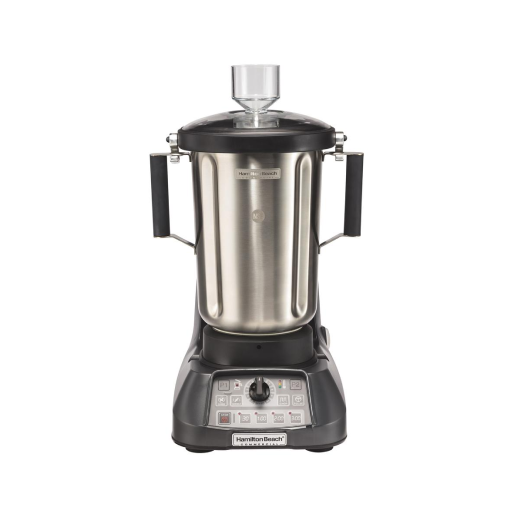
1-gallon, 3.5 Horsepower Expeditor™
For the most high-volume food service, the Expeditor™ is one of the biggest, most powerful blenders around.
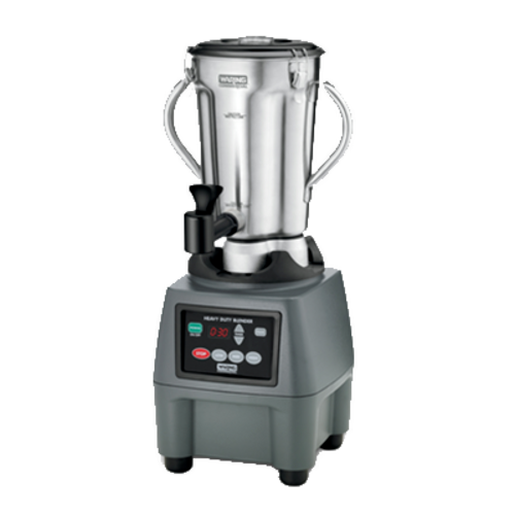
100-Drink/Day CB15TSF from Waring®
With a convenient spigot, it’s the easiest way to churn out new smoothies your customers can’t stop tossing back.
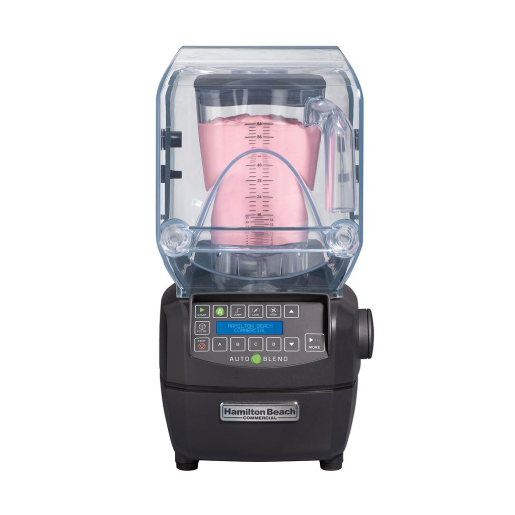
Summit® from Hamilton Beach®
A high-tech smoothie machine with a programmable touchpad and patented Quiet Shield™, it’s one of the quietest operations around.

Handheld Immersion Blenders
One look at a handheld immersion blender and you can see it’s a different breed: if you’re immersing a Kitchen Blender or a Bar Blender, you’re in more trouble than this article can hope to cover (please, keep your countertop blenders safely on your countertop).
If your operation is whipping up vats of soups and sauces in quantities beyond the container sizes of countertop units though, immersion blenders are your game.

There are three areas to consider before adding that pint-sized frother or that beast the size of a boat motor to your cart: Shaft Size, Power Level, and Corded vs. Cordless. Of these three, only Shaft Size can truly make or break your production.
While Power Level can vary quite a bit in this world—anywhere between the same wattage as a lightbulb to ~1 horsepower—it really depends on what you’re blending and how much. If you are blending liquid, you don’t need a powerful motor. If you’re emulsifying food, you’ll want more power.
Since anybody with a phone in their pocket knows the advantages of Corded vs. Cordless technology, let’s place our focus on the most important consideration here: Shaft Size.
How much immersion do you need?
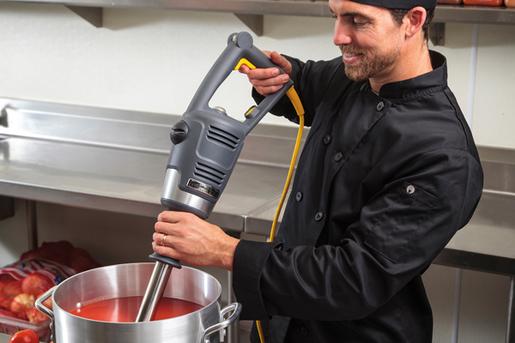
Large Batch
With a larger shaft, the more power is usually associated with it, and a greater power means your blender needs a power cord. For the biggest batches of bouillon, check out the 21” long BigRig™ from Hamilton Beach.
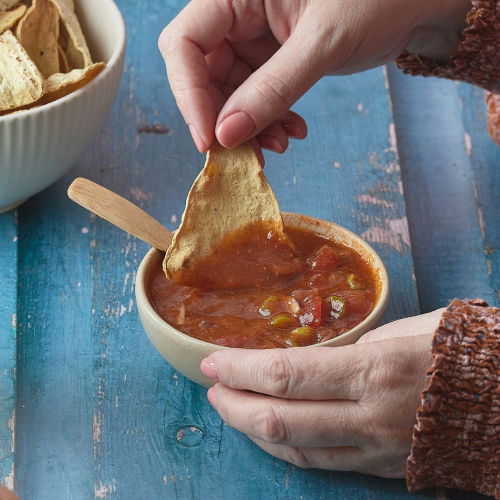
Small Batch
If a shorter shaft size is needed for your application—perhaps whipping egg whites or processing small batches of salsa—then your power requirements are less and you can work completely cordless. The 9” HMI200 from Hamilton Beach is a great starting point.
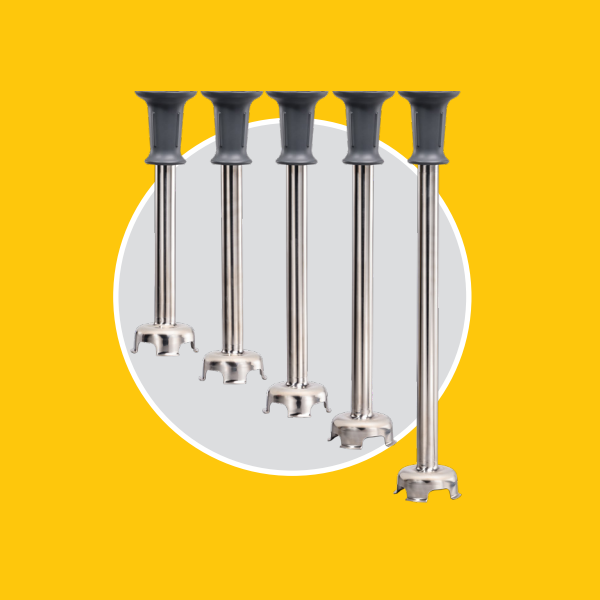
Multiple Sizes
Need an in-between size? Maybe the ability to swap shaft lengths depending on your batch size? The entire BigRig™ series from Hamilton Beach is about as adaptable as immersion blenders can get—you’ll be tied to a power cord, but you won’t have to worry about power levels varying across shaft sizes.
Want to explore more blenders?
For any other questions, drop a line at help@eleven36.com or give us a call at (888) 635-6552.
Now, go forth and blend.

